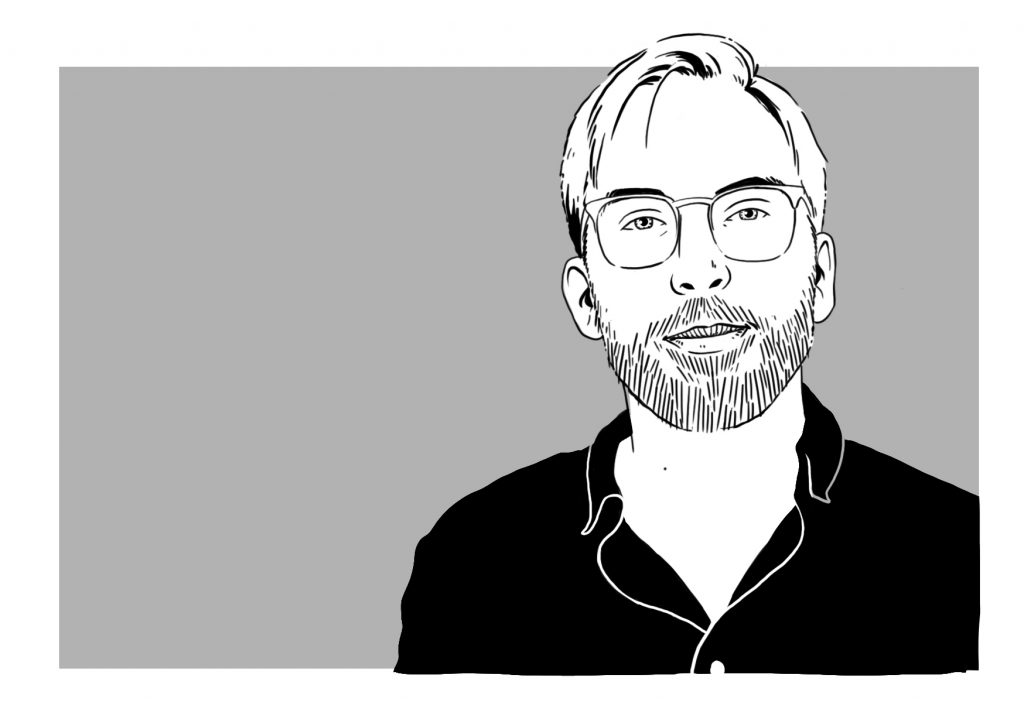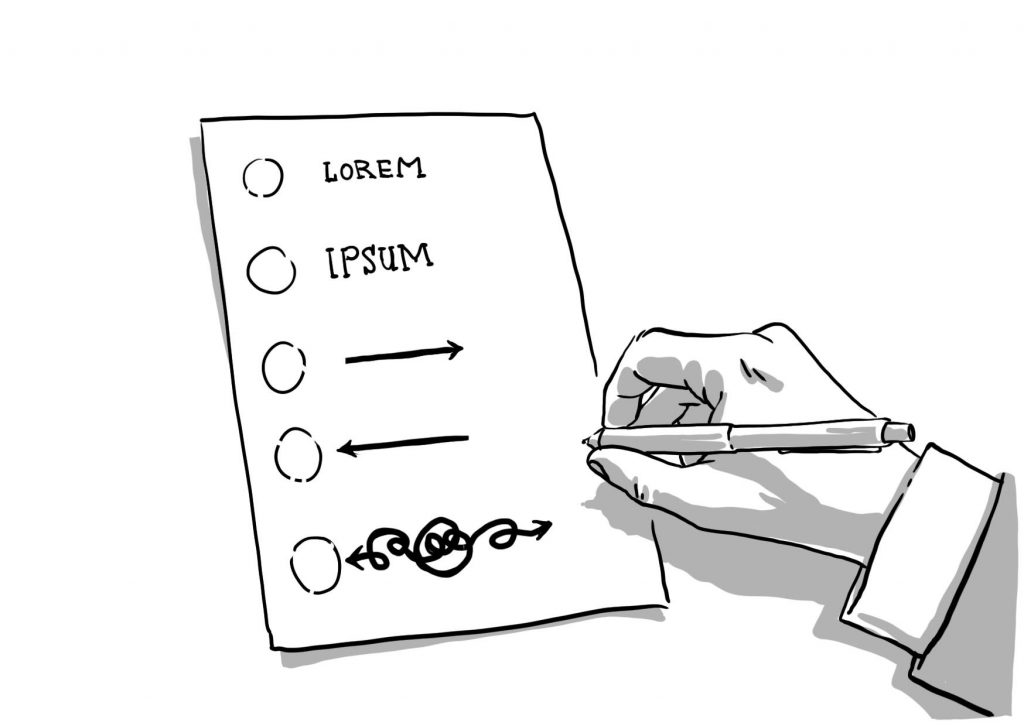On this Sunday, Ukraine will elect its president for the seventh time since independence. Unlike previous elections, Ukrainians will not only be voting for political parties, or politicians but for a new approach towards politics – and both candidates could not be more different. The current president of Ukraine, Petro Poroshenko, who served the country for five war-torn years the country faces the showman Volodymyr Zelensky. The latter does not have any political experience besides his role as Ukraine’s president in the popular TV show Servant of the People. His unorthodox campaign and outsider tactics have appealed to many. Can humour be the umbrella under which Ukraine tackles its problems?
When Vasyl Petrovych had a wild outburst in his classroom, he did not know that this would change his life dramatically. The high school teacher surprisingly got elected as president of Ukraine after a student uploaded a video of his speech that went viral. In his new function, he not only addresses corruption and the all-powerful Ukrainian oligarchy but tries to shift the country’s political culture. He insists on riding a bike instead of taking the presidential limousine, and every morning he gets a packed lunch from his mother.
Vasyl’s story is not real, it is the plot of the Ukrainian TV show “The Servant of the People” . Yet the series is about to determine politics in Ukraine for the next five years. The actor who plays Vasyl Petrovych, Volodymyr Zelensky, has won the first round of the presidential elections on March 31. With 30.24 percent of the votes, Zelensky did miss the absolute majority, though he was by far the most successful candidate; followed by the current president Petro Poroshenko and well-known Yulia Tymoshenko.
Ukrainian politics are rather unpredictable and there is no scarcity of surprises. This uncertainty is viewed by many Ukrainians as an indicator for democratisation (with an impish smile towards Putin’s Russia). However, the support for Zelensky is astonishing. He does not have any political experience and his political programme is literally non-existent. Hence, it is hard to describe whether he is a liberal or social democrat or even something else. Populist may fit the best, but not in a traditional sense: there are no lofty promises like one would find with your typical populist. The only offer Zelensky can make is that he is a new face.
Most likely, this is the fact which matters the most for the Ukrainian electorate. Despite two revolutions, the political elite has not really changed for the last twenty years. Therefore, the desire for new faces and a new politic is more than understandable. Zelensky represents for many an alternative to Ukrainian politics. It is not the case that voters would mix him up with the character Vasyl Petrovych, but people acknowledge that Zelensky’s series is able to put its finger on all the problems that trouble them. In a humoristic way, it outlines the current state of the country accurately. And the biggest problems are still the oligarchs and the high level of corruption.
In 2014, Poroshenko ran a campaign against corruption and promised to end the conflict in the Donbas. After the Revolution of Dignity, Poroshenko was able to unite the country in a way no one has done it before. He was the hope for European integration. Although Ukrainian society and politics have been undergoing serious transformations under his presidency, the two core issues are still on the table.
Moreover, Poroshenko lost the ability to represent a broader Ukraine. After the incident in the Kerch Strait and the partial declaration of martial law, Poroshenko presented himself as commander-in-chief with a camouflage jacket and strong words. At the same time, Poroshenko gained popularity with the foundation of an independent Ukrainian church. Subsequently, he ran his presidential campaign for the first round under the motto of “army, language, faith”. A motto that is neither inclusive nor does it reflect the state of a country which has been at war for five years. With his strategy, the current president won western regions of Lviv and Ternopil but failed in the centre and the east.
Even among the 33,000 service men and women, Poroshenko was not able to gain a clear lead. When only a few weeks ahead of the election’s first round, thousands of nationalists rallied against corruption in the military in Kyiv; it shed a clear light on Poroshenko’s inability to present himself in the right way. Nevertheless, he sharpened his strategy at the moment he knew that he would run on April 21 as well. Since then, Ukrainians have seen campaign posters with the face of Putin and Poroshenko with a caption “April 21, the crucial choice”.
In many ways, this presidential election has both an inherent post-Soviet and New European character. 39 candidates were registered for the election but only a few even ran a campaign. Many candidates were technical. The term “technical” candidate describes candidates who support other candidates and they exist mainly to confuse voters and to secure seats in the electoral committees. A rather obvious example is the candidacy of Yuriy Tymoshenko, whose name was listed directly under Yuliy Tymoshenko on the ballots. Election observers reported that many babushkas and dedushkas (the elderly), who often cannot see that well anymore, did vote accidentally for the wrong candidate or voted invalidly because they voted for both candidates.
Nevertheless, the overall picture is that the Ukrainian elections were free and fair. New regulations made it easier for citizens to vote outside of their home constituency – which is a big deal for Ukraine. Due to the outdated registration law, a holdover of the tsarist era, it is extremely hard to change the place of residence and on election day, people cannot easily vote where they live. In a country with more than 1.5 million internally displaced people, this is a problem of democratic legitimacy. 315,756 people used the possibility to change their address for the election, though only 25 percent of them were people from the occupied territories. For many, the bureaucratic barriers are still too high. Ukrainians who live in the non-governmental controlled areas in Donbas or the Russian annexed Crimea were deprived completely of their right to vote. Some analysts claim that the poor performance of the only pro-Russian candidate Yuriy Boyko was a result of this circumstance.
The New European dimension of the Ukrainian election is rather a mirror of a cultural turn in politics than a genuine Ukrainian phenomenon. Content has been replaced by spectacles and showmanship. Zelensky’s campaign consists of a show with which he toured through Ukraine, and a week before the election a new season of the “Servant of the People” was aired. Since the first round, the electoral campaigns have become increasingly grotesque. Some media NGOs felt the need to appeal to both candidates to take the election seriously and hold a public debate.
Traditionally, the debate takes place on national TV and radio broadcast, but Zelensky only agreed to a debate in the Olimpiyskiy Stadium in Kyiv. Another of Zelensky’s conditions was that both candidates undertook a blood test in order to check for alcohol and drug abuse. So far, so crazy. Unfortunately, the candidates were not able to agree on a date of the debate and therefore, Poroshenko was alone in a sports complex to speak rather about Zelensky than with him. After the debate, Poroshenko encouraged his supporters to enter the stadium and transformed what was supposed to be a debate into a rally. Zelensky plans to have a debate on April 19.
In a country that is dealing with war, annexation and traditionally has a low rate of political participation, apolitical politicians might be dangerous. Far more dangerous is stagnation.
Whether Zelensky will win the second round this Sunday is up in the air, although there is a strong likelihood that he will. Zelensky’s high margin on the first round are unprecedented in Ukraine’s electoral history and he led the ranking of the “second choice” candidate in pre-election polls. More importantly, Poroshenko shut himself off from many Ukrainians, such as Russian speakers or those who are fed up with the old political elite. Those who do not feel represented by the incumbent may vote against him and therefore, for Zelensky.
Though he might be inexperienced in politics and has a soft approach towards Russia, he is nevertheless the hope of a break with the political establishment in Ukraine that has too often mixed business and politics since independence in 1991. For people in the occupied Donbas, new politics in Kyiv also entails hope for solving the conflict and reducing the daily suffering. Only those in the occupied Crimean Peninsula may lose with a president who is too easy on Moscow if the trade for peace means an official break off with Crimea.
Vasyl Petrovych became gospodin president (Mr President) in a country without war and occupation, whereas Zelensky will face a much more difficult situation. His actions may decide between war and peace on Europe’s eastern border and affect people who cannot participate in Sunday’s election. Can the show stand this reality?

Simon Wanka is a Master of International Affairs candidate. During his undergraduate studies, he did an internship with a UNHCR implementation partner in Lviv (Ukraine) and he also works as a student research assistant at the Social Science Centre Berlin (WZB). His core academic interests lie in Eastern Europe and Eurasia with a special focus on human rights, political mobilisation, and migration.
